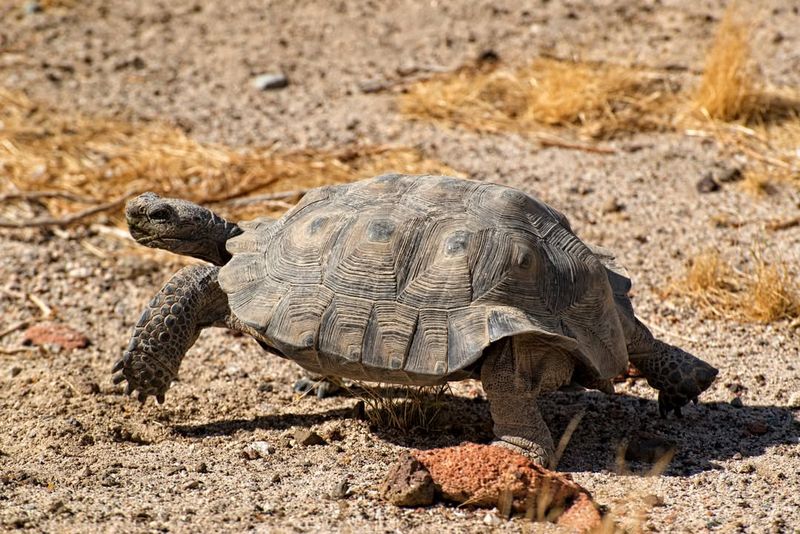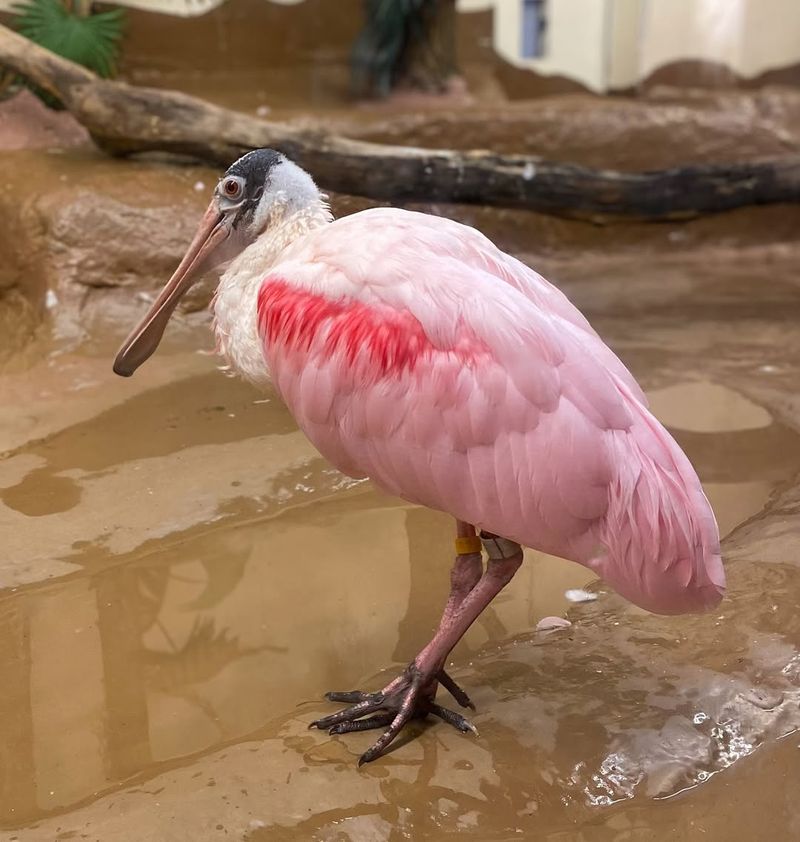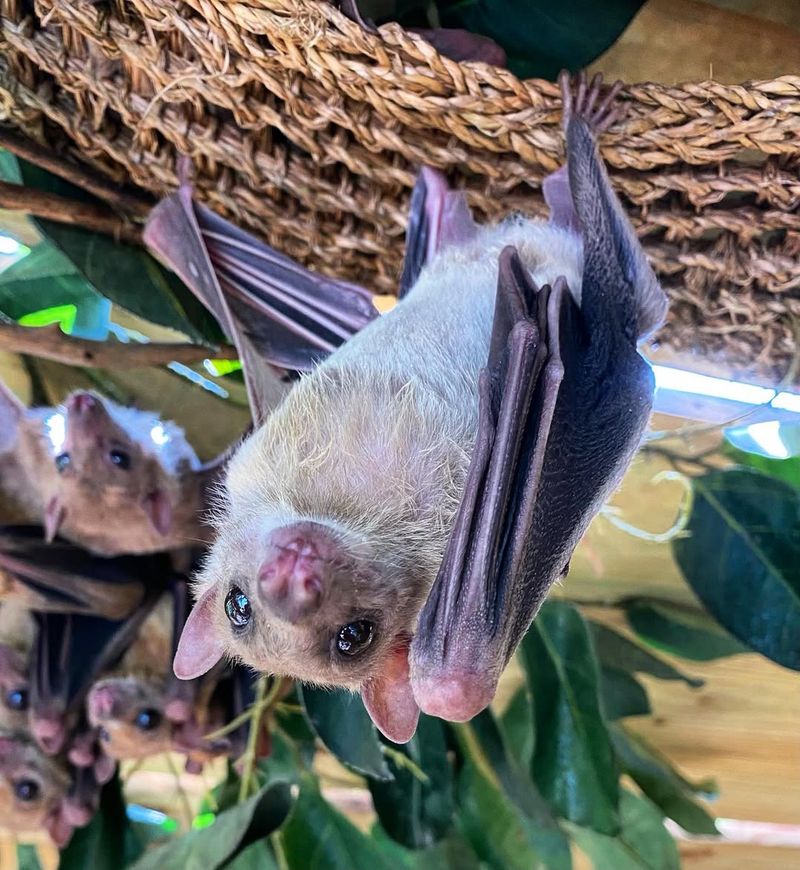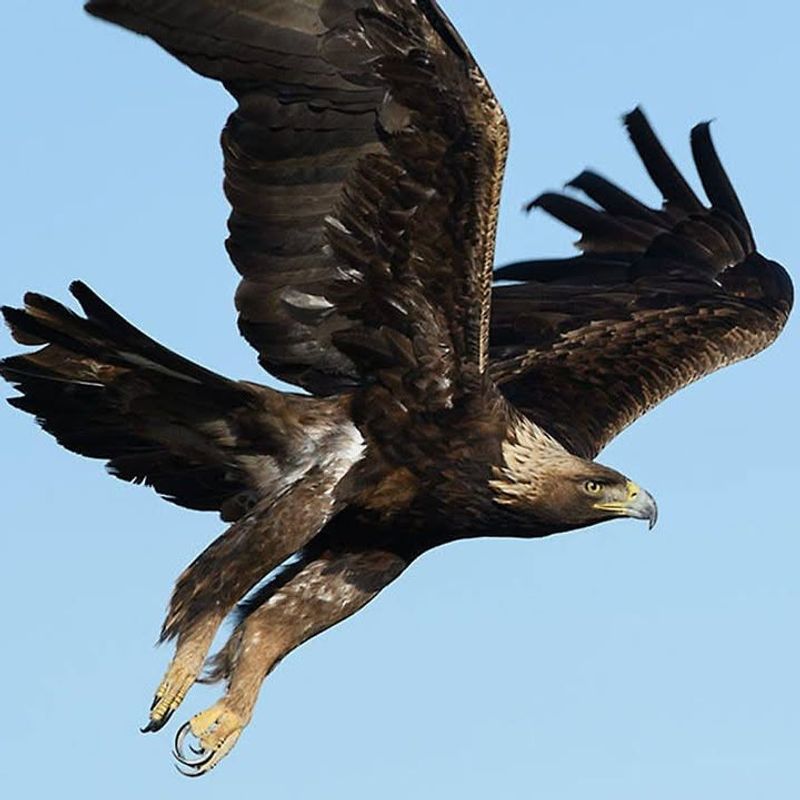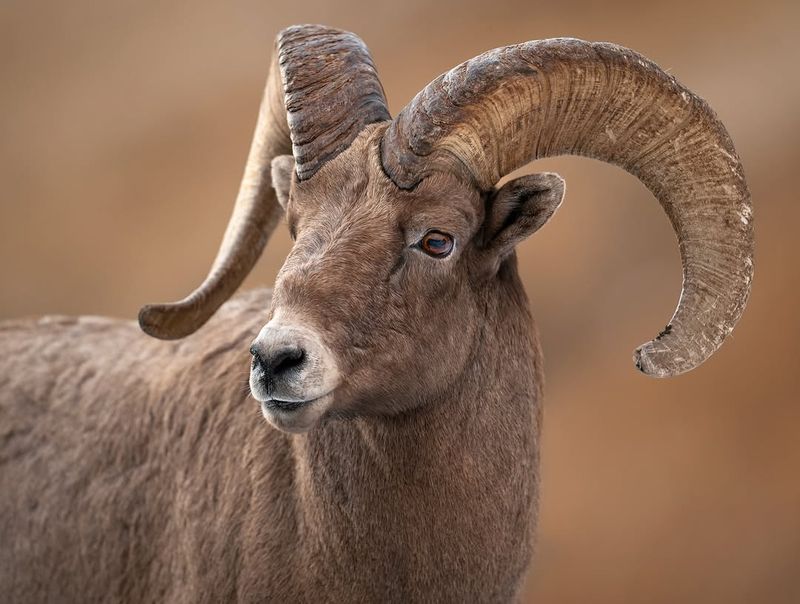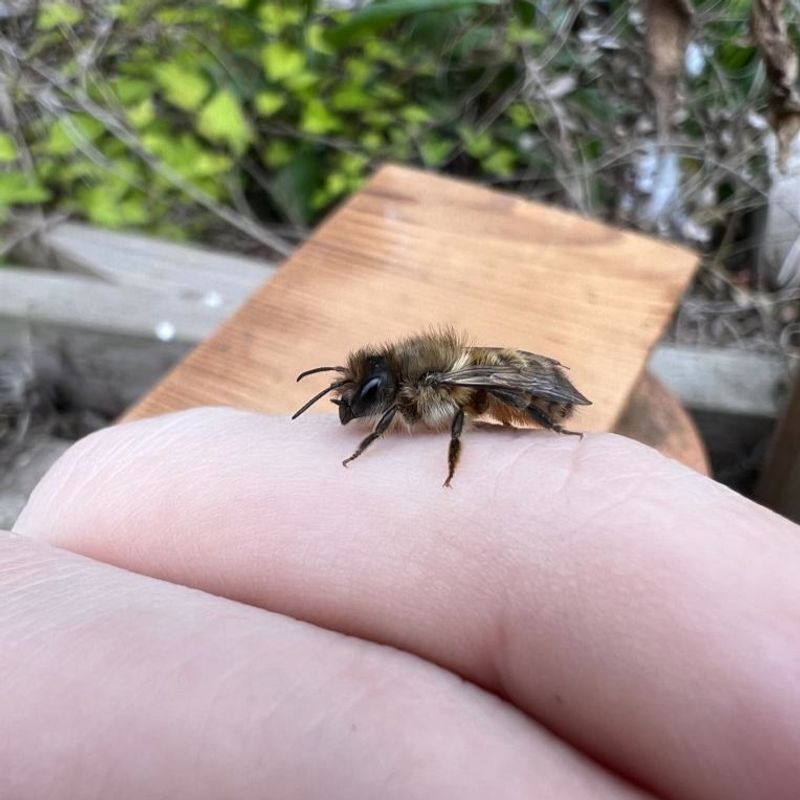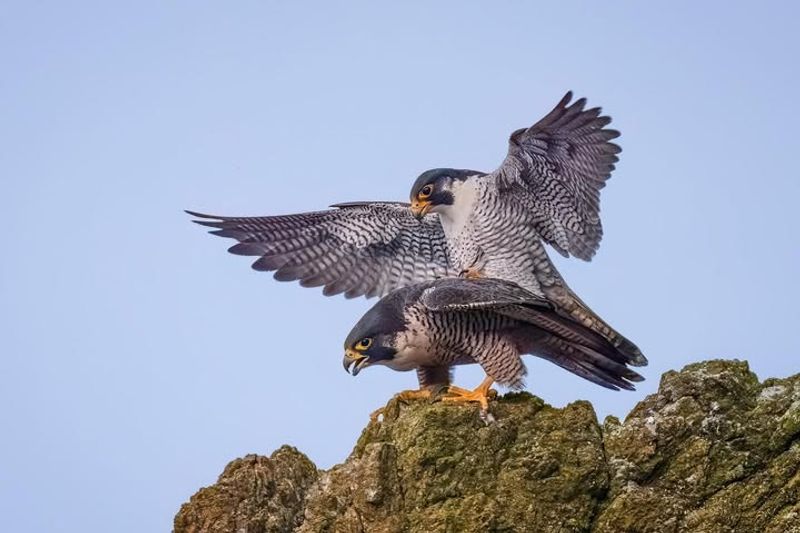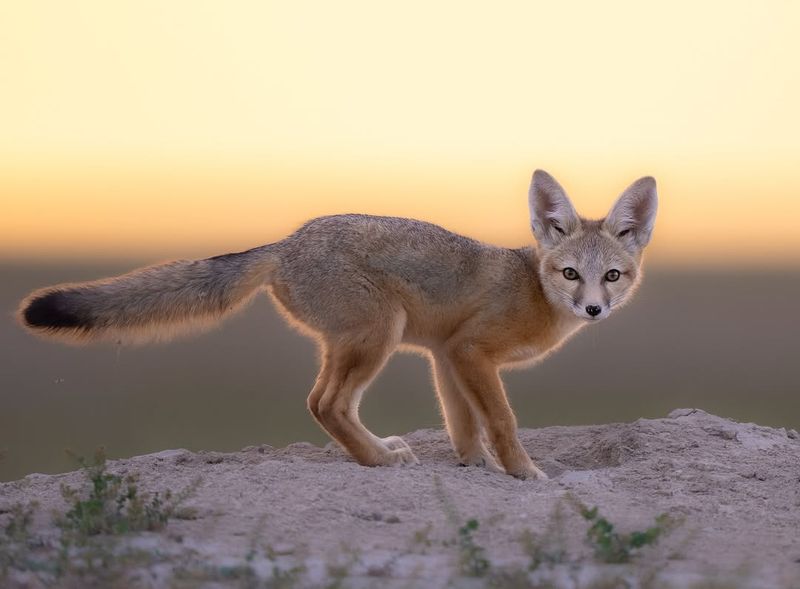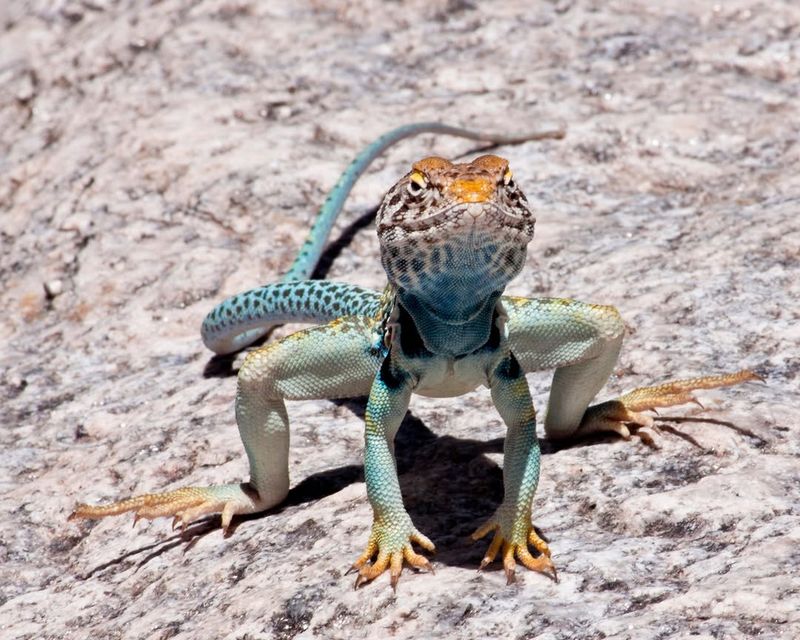Nevada is home to several protected animals that often surprise homeowners. I’ve spotted a few on this list right in my neighborhood.
Understanding which ones you can’t touch keeps you out of legal trouble. Coexisting with them becomes much easier once you know the rules.
1. Desert Tortoise
Nevada’s state reptile holds special status under both federal and state protection laws. Moving or handling one without proper permits can result in serious fines, even if you find it munching on your garden plants.
If a desert tortoise appears on your property, contact Nevada Department of Wildlife immediately. They’ll guide you through proper steps to ensure the animal stays safe.
Building shade structures nearby can help them naturally move along without human interference, keeping everyone happy and legal.
2. Migratory Birds
Federal law protects over 1,000 bird species that travel through Nevada during migration seasons. Robins, sparrows, and even pesky woodpeckers fall under this protection, making removal illegal without special authorization.
Nesting birds receive extra protection, so disturbing nests with eggs or babies brings hefty penalties. Wait until babies fledge before cleaning up empty nests in your eaves or porches.
Installing bird-friendly deterrents like reflective tape helps redirect them without breaking any laws or harming the wildlife.
3. Bats
Did you know bats eat thousands of insects nightly, including mosquitoes that plague Nevada summers? Multiple bat species enjoy federal protection, making DIY removal attempts both illegal and potentially dangerous.
Bat colonies often roost in attics or under roof tiles, but you cannot evict them during maternity season when babies are present. Professional wildlife experts must handle exclusions following strict seasonal guidelines.
Installing bat houses nearby encourages them to relocate naturally while maintaining their important pest control services for your neighborhood.
4. Golden Eagles
Spotting a golden eagle near your Nevada home creates an unforgettable moment, but these magnificent raptors carry strict federal protection. Disturbing their nests or attempting to scare them away violates multiple wildlife laws with consequences reaching thousands in fines.
Eagles sometimes hunt smaller pets or livestock, causing understandable concern. However, hazing or harming them remains illegal regardless of circumstances.
Securing outdoor pets and using protective enclosures provides legal solutions while letting these incredible birds continue their natural hunting patterns across Nevada skies.
5. Gila Monsters
Nevada’s only venomous lizard might look intimidating with its beaded skin and slow movements, but state law strictly protects these rare reptiles. Finding one in your garden requires immediate professional assistance rather than personal removal attempts.
Gila monsters rarely appear in residential areas, preferring remote desert habitats. Their presence usually means natural habitat disturbance nearby.
Never attempt to capture or relocate them yourself, as their venomous bite poses serious medical risks. Contact Nevada Department of Wildlife for safe, legal handling by trained professionals.
6. Bighorn Sheep
Imagine glancing out your window to see Nevada’s state animal grazing in your yard! Bighorn sheep occasionally wander into residential neighborhoods, especially in areas bordering their mountain habitats.
State protection means you cannot chase, harass, or attempt removal even when they damage landscaping. Their impressive horns and size make them potentially dangerous if cornered or frightened.
Keeping distance and securing gardens with tall fencing helps prevent damage. Wildlife officials will assist if sheep become problematic, using humane methods to guide them back to appropriate terrain.
7. Native Bees
While honeybees get most attention, Nevada hosts hundreds of native bee species crucial for desert ecosystem health. Many receive protection under pollinator conservation laws, making extermination illegal without proper assessment.
Native bees rarely sting and often nest underground or in small cavities. Unlike aggressive wasps, they pose minimal threat to households.
Before calling exterminators, identify the species through Nevada’s agricultural extension services. Most native bees benefit your garden tremendously, pollinating vegetables and flowers while requiring no maintenance. Learning to coexist brings beautiful blooms and legal compliance.
8. Peregrine Falcons
The world’s fastest animal sometimes chooses Nevada buildings as nesting sites, bringing federal protection directly to your doorstep. Peregrine falcons recovered from near extinction, earning continued safeguarding under endangered species legislation.
Their presence might seem inconvenient, especially during nesting season when they aggressively defend territories. However, removing nests or eggs carries severe legal consequences.
Most nesting periods last only weeks before young falcons fledge. Temporary inconvenience brings the reward of witnessing nature’s speed demons up close while staying compliant with federal wildlife regulations.
9. Kit Foxes
These adorable little foxes with oversized ears occasionally den under Nevada sheds or porches, creating unexpected houseguests. Kit foxes hold protected status in many Nevada counties, particularly where populations face habitat pressures.
Despite their cuteness, kit foxes are wild predators that can carry diseases. Feeding or approaching them creates dangerous situations for both humans and animals.
If kit foxes establish dens on your property, wait until pups mature before implementing humane exclusion methods. Wildlife professionals can install one-way doors, allowing foxes to leave naturally without harm or legal violations.
10. Sagebrush Lizards
Nevada gardens often host these quick little lizards darting between shrubs and rocks. Several sagebrush lizard species receive state protection due to habitat loss across their desert range.
Homeowners sometimes mistake them for common lizards and attempt removal or pest control measures. However, harming protected species brings legal troubles regardless of intent.
Sagebrush lizards actually benefit gardens by consuming vast quantities of insects and spiders. Creating rock piles and maintaining native plants encourages them to stick around, providing free, legal pest control throughout Nevada’s growing season.


